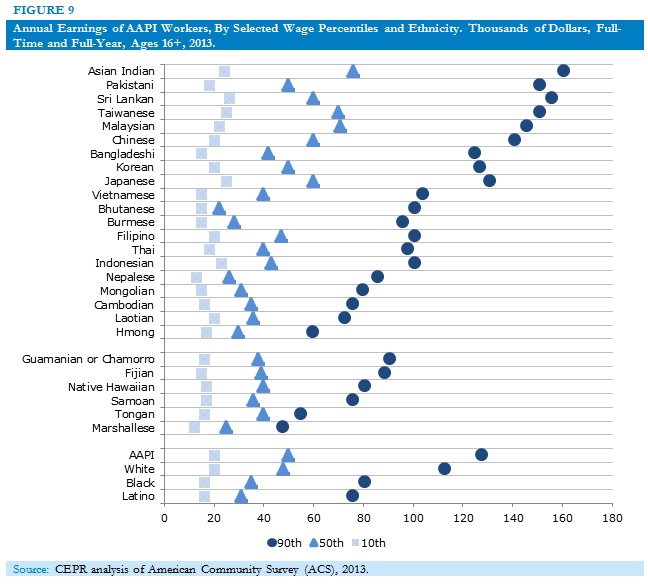May 28, 2015
To mark Asian American and Pacific Islander (AAPI) Heritage Month, CEPR has released a new issue brief, Asian American and Pacific Islander Workers Today.
A key theme that runs throughout this analysis is that the AAPI workforce is exceptionally diverse, so much so that average statistics obscure many important facts about this population. For example, while AAPI workers’ median annual earnings are the highest among the major racial/ethnic groups (see figure below), AAPI workers also exhibit the greatest inequality of earnings between workers at the 10th and 90th percentiles of the wage range. In addition, the range among AAPI subgroups is great: while a handful of subgroups are compressed at the bottom of the wage scale, other subgroups include workers at both the extreme low and high ends of the wage range.

Other areas covered by this issue brief include distribution by ethnicity, areas of residence, immigration and citizenship status, industries, and unemployment and poverty ratets.
CEPR originally presented these findings earlier this month at an AAPI Hertage Month panel discussion at the Department of Labor. The event included opening remarks by Deputy Secretary of Labor Chris Lu and a talk by DOL’s chief economist, Heidi Shierholz, about how the Immigration and Naturalization Act of 1965 affected AAPIs. This issue brief also updates several parts of Diversity and Change: Asian American and Pacific Islander Workers, a comprehensive report issued by CEPR and the Center for Labor Research and Education at UCLA in 2011.







